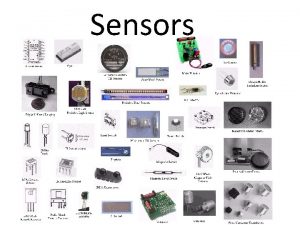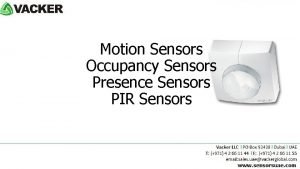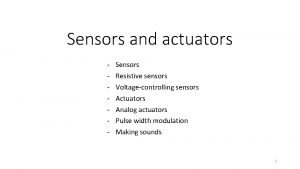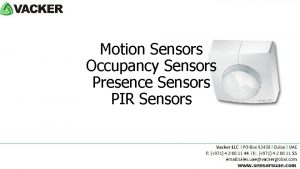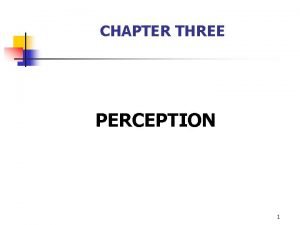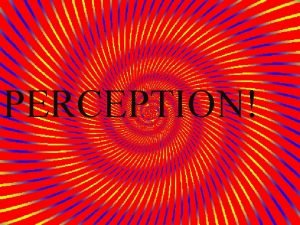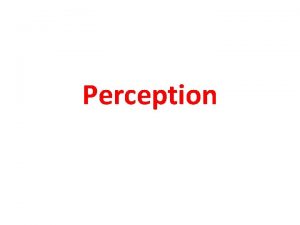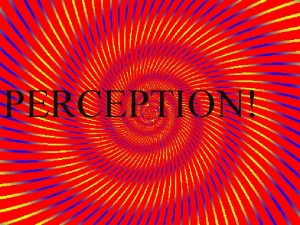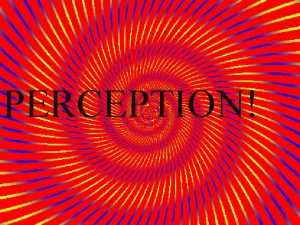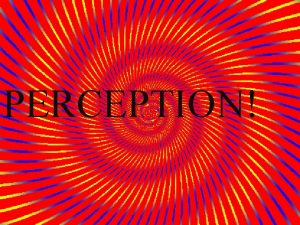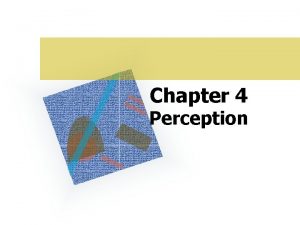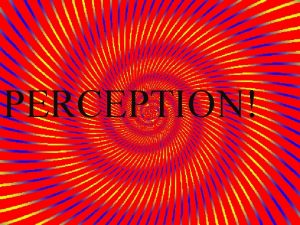Sensors Sensors are for Perception Sensors are physical
















- Slides: 16

Sensors

Sensors are for Perception • Sensors are physical devices that measure physical quantities. – Such as light, temperature, pressure • Perceptual system of a robot – Proprioception (internal) – Exteroception (external) • Sensor noise and errors are inherent in physical measurement, thus the challenge of uncertainty

Switches measure current to detect an open or closed circuit.

Levels of Processing • Electronics (low level): such as measuring voltages • Signal processing (medium level): such as separating voice from noise • Computation (high level): such as recognizing an object from an image

Examples Bump Sensors (low) Odometer (low) Sonar (medium) Speech (medium) Vision (high) Given the sensor input, – Both simple and complex sensors can be used to answer the question: What should a robot do? (action in the world) – Complex sensors can also be used to answer the question: What was the world like? (reconstruction of the world)

Locating People What kind of sensor would you use to locate people in a room? Camera is the most obvious, but the most complex to process the signal. Temperature: locate objects within human body temperature. Movement: locate objects moving that are a certain size. Color: locate objects of skin color, or human clothes. Distance: locate objects that block a previously area that was open. The sensors will need to be calibrated before use in the robot.

Finding Distance using Sonar

Simple Sensors are sensors that don’t require a lot of processing. • Passive vs. Active (applies to both simple or complex) – Passive: measures a physical property only, with a detector Ex: switches, resistive light sensors, cameras – Active: provides own signal/stimulus, with both an emitter and a detector Ex: reflectance and break beam, ultrasound and laser.

Types of Sensors Limit sensor Contact Sensor Shaft encoder sensor

Light Sensors • Photocells convert light intensity to resistance in the circuit • Work even with invisible light (such as infrared) • Could be used for measuring intensity, differential intensity or break in continuity – Reflectance sensors: active sensors with emitter and detector side by side – Break beam sensors: emitter and detector face each other • Calibration is used to reduce noise






Decision Making Sensory inputs, such as the value of the light sensor, will make the robot a little more intelligent. • We need a decision-making mechanism so that our robots can react to their environment autonomously (without a human touching it). • Decision making is achieved by conditional execution in the programming environment. • In Mind. Storms, by using Conditional Constructs (if-then-else) , we can allow programs to behave differently based on different values of sensor inputs.
 Antigentest åre
Antigentest åre Rutin för avvikelsehantering
Rutin för avvikelsehantering Biologiska arvet
Biologiska arvet Byggprocessen steg för steg
Byggprocessen steg för steg Personlig tidbok fylla i
Personlig tidbok fylla i Myndigheten för delaktighet
Myndigheten för delaktighet Presentera för publik crossboss
Presentera för publik crossboss Rbk-mätning
Rbk-mätning Formuö
Formuö Var 1721 för stormaktssverige
Var 1721 för stormaktssverige Tack för att ni har lyssnat
Tack för att ni har lyssnat Boverket ka
Boverket ka Hur ser ett referat ut
Hur ser ett referat ut Epiteltyper
Epiteltyper Varför kallas perioden 1918-1939 för mellankrigstiden
Varför kallas perioden 1918-1939 för mellankrigstiden Brant karttecken
Brant karttecken Formel för lufttryck
Formel för lufttryck

















